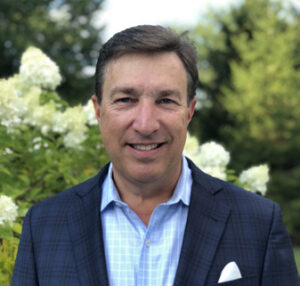Worthington Products is well known as a multidisciplinary designer, manufacturer, and installer of waterway barrier systems made from steel, high-density polyethylene (HDPE), or molded plastic. These barriers keep floating debris away from dams, reservoirs, canals, and other structures. Fewer people may know, however, that Worthington also builds custom fish barrier systems to keep fish out of water conveyance structures. In this interview, Worthington President Paul Meeks tells Irrigation Leader about the company’s fish barrier product line.
Irrigation Leader: What is the difference between a fish screen and a fish guidance barrier?
Paul Meeks: There are different types of fish barriers. One common type is electric fish barriers. There’s a company called Smith-Root that excels in those. They are not physical barriers; instead, they use some type of electronic current or strobe light to keep fish out of a structure. Then there are physical barriers, which are what Worthington produces. Our fish barriers include screening and netting systems that go to the bottom of a water body or down to a specific depth to prevent fish from going into a structure.
Our behavioral fish guidance systems are floating walls positioned upstream of a structure in an area where water flows meet certain conditions. They guide fish to a bypass or a collection area. We study the currents and the fish types in order to decide on the depth and angle of the boom line.

Irrigation Leader: What types of materials does Worthington use to build its fish barriers?
Paul Meeks: A distinction should be made between structural materials and flotation materials. The flotation portions are on the surface, and they’re what everyone sees. On Worthington products, they’re usually orange in color. Those sections are usually made of HDPE pipe or molded plastic; sometimes, they’re made of steel. The majority of the structure, however, is underwater. It is generally made of galvanized or stainless steel. We customize it depending on the customer’s preference, using materials including perforated metal, solid panels of ultra-high-molecular-weight polyethylene, rubber, and other nonmetallic materials. For really deep installations, we may combine a surface system that goes down 5 feet or so with some type of netting below that.
Irrigation Leader: What is the general life cycle of your barriers?
Paul Meeks: If the floats are made of molded plastic, the barrier will last 15–20 years. If the floats are made of an HDPE product, it will last roughly 50 years. Galvanized steel, if you’re in decent water, will give you a 35‑year life, and stainless steel has a longer life than that.
Irrigation Leader: Where are your barriers manufactured?
Paul Meeks: We manufacture all over the world. We have production in the United States, Brazil, Canada, France, and India. We have steel fabrication partnerships all over the world as well. For our U.S. clients, all production occurs here in the United States. We manufacture our floats in Ohio, but for steel fabrications, especially the large ones, we try to find a manufacturer close to the customer. That simplifies the logistics.
Irrigation Leader: Where in the United States have your fish barrier systems been deployed?
Paul Meeks: We have behavioral fish guidance systems on the West Coast from Washington State down to California. We also have a number of systems on the East Coast.
Irrigation Leader: How about around the world?
Paul Meeks: Most of our overseas business is focused on debris control rather than fish guidance. There is great interest overseas in fish guidance, but people haven’t moved toward getting a system in place. Usually, they just have a bypass structure.
Irrigation Leader: What should every irrigation district or water entity know about working with Worthington on fish barriers?
Paul Meeks: They should know that we have a resident fish biologist on staff who understands how fish behave. He says he likes to save the fish so that he can eat the fish. We know how to design barriers and make them work, we know how to make effective floating systems, and we know how to guide fish. We involve experts in doing all of that.
Irrigation Leader: Who should our readers call to learn more about your fish barriers?
Paul Meeks: If they want to talk fish barriers, I suggest they call me directly at Worthington Products and I will guide them to the right people to talk to.
Paul Meeks is the president of Worthington Products. He can be contacted at pmeeks@tuffboom.com or (330) 452‑7400.

